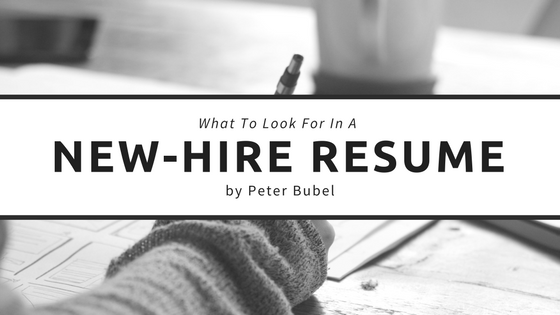
Peter Bubel+ by | Jun 3, 2018 | Blog, Pennsylvania, Peter Bubel, Reading
A role in leadership can appear daunting. However, a skilled leader knows how to navigate the pitfalls and stay the course with the best strategy. Individuals bring different strengths to a team. A good leader knows how to coax team members into collaboration rather than competition. A capable leader unites the team around a shared vision or goal.
Leadership skills are useful in all walks of life. Some leaders are high up on the corporate ladder, leading teams of world-wide game-changers. Others are leading a team for an assigned group project. And still others are leading the family team. These principals work in different types of settings with different types of teams.
Cast vision. While each team’s situation will be slightly different, chances are there is an end goal in mind, a final outcome that will signify completion and success or failure of the project. An experienced leader directs the team and facilitates forward momentum. A singular sense of purpose emerges as people get on the same page.
Seek input. As cohesiveness grows, collaboration increases. Team members begin to cooperate with each other. Creativity flows freely. People open up and share their ideas. They learn to trust that another team member’s idea might be better than their own. An experienced leader takes part in the collaborative process and makes room for different points of view. He or she maximizes this time as an opportunity to keep the team on task, and yet make adjustment based on input from the team.
Transfer ownership. Gradually, and almost imperceivably, the team takes ownership of the project. They develop laser sharp focus and a drive to achieve the goal. Leaders know when to let go of the reigns to allow the team to run. Leading a team is like a dance requiring a balance of supervision and control with plenty of freedom for the team members to perform at their best.
A seasoned leader is able to rally a group of Individuals with unique personalities and experiences around a common goal. That same leader knows how to connect people in a joint effort, utilizing the strengths of each member and considering different plausible team suggestions. Leadership necessitates allowing the team members to shine; after all, they are the reflection of a truly great leader.

Peter Bubel+ by | May 22, 2018 | Pennsylvania, Peter Bubel, Property, Property Management
The United States Bureau of Labor Statistics indicates that America is home to roughly 317,000 property managers, workers that maintain regular operation of houses, apartment complexes, commercial facilities, and other buildings.
Leasing to just one bad tenant can effectively pile on countless thousands of dollars in necessary repairs and hundreds of hours of labor. Since property managers ultimately make such calls, risk is inherent in the day-to-day undertakings of people in such positions.
Natural disasters can wreak havoc on structures and land they sit on, mid-level to major crimes can generate negative publicity for properties, and tenants that disturb neighbors can encourage them to seek housing elsewhere. That’s not to mention countless other manifestations of risk that property managers must be ready to deal with in their lines of work.
While risk can never be eliminated, there are several precautions that can be taken to minimize risk.
Insurance is arguably more important than any other risk mitigation strategy
Statistics indicate that just four in ten apartment lessees in the United States hold active insurance policies that protect against emergency, theft, and other unforeseen happenings that often cause financial damage.
As such, property managers can never reasonably assume that their tenants have active insurance coverage taken care of.
Insurance is available for virtually every asset, occupation, and situation, including the ownership or management of real estate. Every property manager should maintain active insurance coverage that covers literally everything bad that could happen to properties, tenants, and guests. Further, a solid means of making sure all of the proverbial bases of properties under management are covered is requiring new tenants to provide proof of renter’s insurance prior to allowing them to sign leases.
Residents should be made fully aware of facility-wide plans of staying safe during emergencies
Active shooter threats, hurricanes, sinkholes, and earthquakes are four examples of emergencies that unfortunately rear their ugly head far too often across planet Earth. Rather than assuming they won’t happen, or that tenants and their guests will act in the best interest of their safety, property managers should make certainthat tenants are fully aware of facility-wide plans of action if any of the aforementioned emergencies occur.

Peter Bubel+ by | Dec 20, 2017 | Blog, Peter Bubel, Property Management
When people decide to leave their nine to five job and pursue a business of their own, they often don’t think about how the decision can affect their life for the better. While profits is the key reason why people choose to own a business, entrepreneurship can change your life in more ways than one:
Travel More
Entrepreneurs travel a lot. They’re on the road, handing out business cards, giving talks, attending seminars, meeting with investors, and so forth. And while being on the road can be exhausting, it can definitely be life-changing. Situations like getting lost in a new neighborhood, finding a car to rent, and encountering difficult people will force you to become more independent and resourceful.
Become More Responsible
Entrepreneurship teaches people on how to take responsibility when things go wrong. People love the idea of owning and managing their own business but only when the business is succeeding. When the business takes a turn for the worse, they blame other people and even economic conditions. When you start your own company, you have all the power. Whatever you say, goes, which means a bad product launch or poor customer service arose from a bad decision you made in the past.
(more…)

Peter Bubel+ by | Dec 5, 2017 | Blog
The task of writing a memo can seem burdensome as many people struggle to choose the correct format, the right message, and the perfect tone. Memos can be very helpful to employees and CEO’s if done right; however, memos could also be leaked and ignored if done poorly. Follow these tips to create a memo that is clear, effective, and memorable.
Identify The Subject
Before you can write a remarkable memo, you have to know what you are writing about. Not only will this help you avoid going on tangents, but this will also help you clarify your point. Knowing your topic, and staying on topic, will also help the receiver understand the message.
Less Is More
Identifying the subject and staying on topic will also be beneficial when it comes to the length of your memo. By designating your key points, you can avoid extra information that isn’t necessarily needed. The less amount of time it takes to read the entire memo, the more likely it is that it will be read. For co-workers who are on a time-crunch, they may quickly decide whether it is worth a read, or if they can go without. If there is a lot of information to share, consider sending a shorter memo at first, and then following up with more detail for those who would like to read further.
Attention Grabber
Remember back in grade school English class and the teacher asked each student to write a paper on some random subject? When starting off the paper, the first sentence should always be an attention-grabber or something that makes the reader want to keep reading. The same goes for memos and email subject lines. Those are the first impression, and if severely lacking, the reader most likely won’t open or continue reading the memo.
Tone Choice
This one can be somewhat intimidating, but it doesn’t have to be. The first thing to note is that memos are typically used to inform and do not require much more than a factual and professional tone. Present your information, say thank you, and keep it moving. On the other hand, memos can also be used to inspire, encourage, or even scare. It may be surprising what all a story that impresses or details that conveys the vision can do for a memo’s tone.
Honesty And Openness
Along with the message you want to disclose, explain what is expected following the memo, or reasons why the information is being shared. For example, if a new policy is being instated, it would be beneficial to explain how and why the new policy came about, and how it will affect the workers and the day-to-day.
Editing Matters
One small grammatical error can ultimately diminish the professionalism and the perceived accuracy of a memo; although, editing should include more than searching for grammatical errors. For example, when asking someone to read and edit a memo, ask them to look for irrelevant information, tone, clarity, content, and perspective before sharing feedback.

Peter Bubel+ by | Dec 5, 2017 | Blog, Peter Bubel, Uncategorized
Reading over hundreds of resumes and selecting the best ones is not only a time-consuming task but is also a significant part of building a successful company. It may seem daunting, but there are ways to make this important, yet tedious task, a little less stressful.
When staring at an overwhelmingly large stack of resumes and cover letters, the first place to start is a simple scanning process. Take a quick look at each resume and cover letter for specific things that give a “green light” or “red light” for that particular candidate. Those that have green light material go in the “maybe” pile for further examination and those with red light material go in the “nope” pile.
When doing a quick resume scan, look for these signs:
- Relevant Keywords: If you only look for one thing while doing your scan process, let it be this. Think about keywords that are often used within your company or industry before beginning your overlook. Search for those words that best fit the job title with more importance placed on the most recent positions.
- Lack of Professionalism: A resume is a candidate’s first impression on a potential employer. If their resume is not carefully crafted, and (practically) flawless, it says a lot about who that employee will be over the long term. If they can’t take the time to create an honest, upbeat and professional resume, they most likely won’t take that time with their work either.
- Readability: From first glance, the resume should be inviting and attractive. Words should be clear and easy to read, and the organization of the information should allow for an easy read.
Once you have done a quick scan and narrowed that vast pile down, it is time to begin a more thorough examination of each candidate’s qualities and experience. While there are many factors that come into play for each individual, there are a few essential items that point to a great potential employee.
Succinct Content
It is vital for a candidate to be able to communicate their expertise without using too much industry terminology or jargon. The ability to convey their message while also simplifying it in a way that can be understood by those outside of the industry is a useful tool when working with clients and business partners; it can also be a great skill to have when training new employees or working on a team. The content should also contain no spelling or grammar mistakes. If the resume looks like it hasn’t been reread or edited, it would be easy to assume that their work would also go unchecked.
Longevity
When assessing each candidate’s experience, take a moment to look at the date span of each position. Shorter time-spans between jobs could suggest that the employee might not be interested in a long-term commitment to building a company. Longer time-spans may indicate that an individual is involved in advancing skills and sticking with a company as it grows.
Tailored Messaging
If there is a signal that an applicant should immediately be put in the interview process, it is tailored messaging. If the resume and cover letter seem to have had phrases copy and pasted in, it may imply that the applicant is sending out the same resume to multiple companies. Instead, look for resumes that seem to have been crafted specifically for the job title and description that was posted.
Resumes are a great way to get an idea of who is a good possible fit and who may not be. However, resumes can only share so much about a candidate. If you are unsure about a resume and cover letter, a quick phone interview could give you an idea of what to do next.





